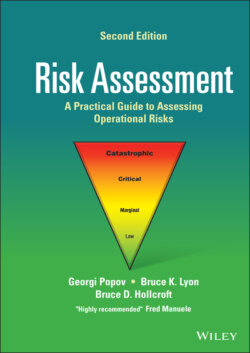Читать книгу Risk Assessment - Georgi Popov - Страница 68
3.14 Documentation
ОглавлениеDocumentation is an important form of verification and communication. Virtually, all aspects of the risk assessment process discussed in this chapter should be documented including details on the following.
Selecting the risk assessment matrix
Determining the purpose and scope (context)
Selecting the team
Identifying the hazards or operations to be assessed
Hazard/risk identification
Risk analysis
Risk evaluation
Communication and documentation
Monitoring and continuous improvement
Documenting the risk assessment serves to record the efforts of the assessment process, as well as the resulting risk findings and recommendations. It also allows those who were not directly involved to have some understanding of the risks and risk reduction measures as well as an organization to prove and demonstrate their efforts and actions. Documentation allows future reviewers to recreate and understand the thought process behind the previous risk assessment. It enables teams conducting future risk assessments to build upon and further improve the work that has already been done. Possibly, most importantly, a good risk assessment that is well documented might serve to limit an organization’s potential liability at some point in the future by showing their decisions and actions be well thought‐out by a qualified team to the best of their ability at the time.
Communication, documentation, and employee involvement are components of virtually all standards relating to risk assessment including ANSI/ASSP Z10.0, ANSI/ASSP Z590.3, and ANSI/ASSP/ISO 31010, to mention a few. Furthermore, risk assessments would be more successful if those performing them would take a little time to think about who might be able to contribute and who might benefit from the risk assessment and engage those parties where possible.
